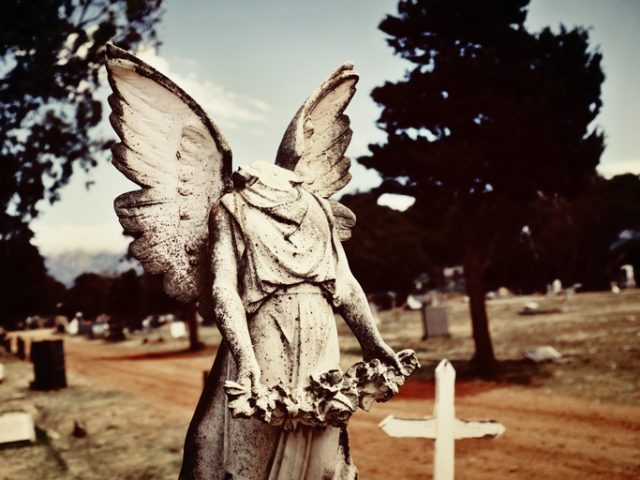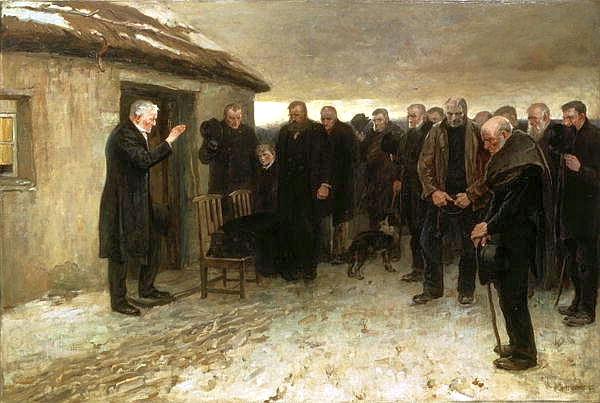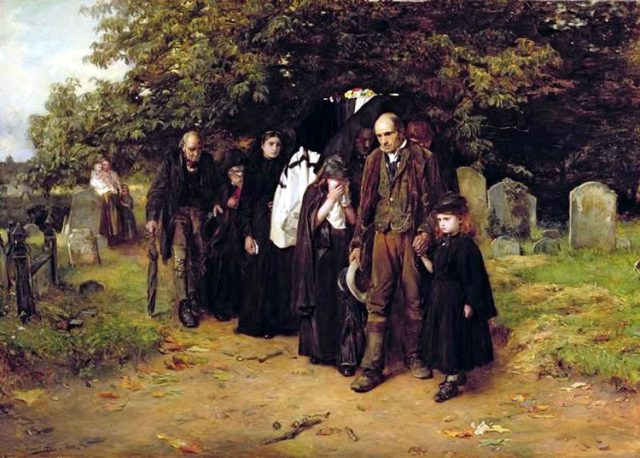Numerous cases of premature burial were reported over the past centuries, with the earliest known account dating to the 1300s, when Duns Scotus, among the most important of the philosopher-theologians of the High Middle Ages, managed to break free from his grave after he was mistakenly pronounced dead and buried.
Various prevention measures were established over the years ― such as bells, periscope-like devices providing air, various ropes and signal flags. Still, even though premature burial did happen on many occasions, the fear itself spawned many folktales and urban legends.

In the book Buried Alive: The Terrifying History of Our Most Primal Fear by Jan Bondeson, the author gets to the bottom of the cases that are rooted in facts, separating them from myths and tales that grew from folklore.
Supported by this study, the list before you offers an insight into four bona fide true stories of “the living dead” that took place in the 19th and 20th century.
1. A German Shoemaker

Kicking off the list is an account which took place in 1822 in Germany and involved a 40-year-old shoemaker who was reported dead by his family. Something seemed off since the very beginning of the funeral, as reports indicate that the man, despite being motionless, displayed no other signs of death.
The alleged cadaver released no stench, nor was it stiff.
Nevertheless, the ceremony continued as planned. However, as the last shovel of dirt was thrown on the grave, a loud knocking was heard ― undoubtedly coming from below the ground.

The gravedigger quickly dug up the coffin, only to find the shoemaker, motionless as before, with only his arms stretched upwards.
A physician who arrived at the spot checked for vital signs, including cutting one of the shoemaker’s vein’s, from which blood came rushing out. It appeared as though the man was neither dead nor alive. For three days attempts were made to revive the shoemaker, after which he was finally laid to rest.
2. Essie Dunbar

Although the shoemaker drifted somewhere between life and death, only to fall into the grasp of the reaper, the story of Essie Dunbar was a happy one indeed.
In 1915 in South Carolina, a woman by the name of Essie suffered an epileptic fit which apparently claimed her life. Or so it seemed. Her lifeless body was scheduled for burial the day after, in hopes that her sister who lived outside of town would have time to arrive for the funeral.

However, she failed to get to the cemetery in time and Essie was buried without her presence. Broken by grief, she demanded the grave to be opened so she could see her departed sister one last time.
When they opened the grave, the sight was as biblical as the tale of Lazarus ― Essie Dunbar was alive and well, and even smiling, for due to her sister’s love she escaped the fate of being buried alive. She lived on for 47 more years, which is one of the main reasons why this story was well documented through studies and media alike.
3. Philomele Jonetre

While Essie Dunbar lived to see her fake death become a story in the newspapers, Philomele Jonetre suffered a similar fate as the nameless shoemaker. Buried with haste after she was pronounced dead due to cholera, this French woman was placed underground just 16 hours after her alleged death.
Once again the gravedigger was the first to notice something strange regarding the fresh tomb ― thumping and quite screaming was heard coming from beneath the ground.

The grave was dug up once more and a lit candle was placed under the woman’s nose, in order to detect signs of breathing. Although there were no apparent signs of Jonetre breathing, her heart appeared to be beating. Also her eyelids were twitching and her muscles contracted.
However, it seemed as though it was only a fit after which her soul parted with her body completely. She was once again pronounced dead the following day and buried in the same pit for the second time.
4. Angelo Hays

Another case hailing from France that features in Bondeson’s book is the story of a 19-year-old man who suffered a horrible motorcycle accident in 1937. The accident that was believed to have claimed his life also left his face completely disfigured.
The consequences were so appalling that even his parents weren’t allowed to see him.
Since it was determined Angelo had no pulse, he was placed in a morgue and buried three days later. However, as you may have guessed, this wasn’t the end.
An insurance company opened an investigation regarding Hays’ accident and proceeded to exhume the body in order to obtain evidence relevant for the case, just two days after the burial.
To everyone’s surprise, the body was still warm and showed no signs of decomposing. It was later concluded that Angelo fell into a deep coma which reduced his body’s need for oxygen and kept him alive for the whole time.
Still, his life was hanging by a thread. After a long period of rehabilitation and several surgeries his health was miraculously restored and he continued his life as the man who conquered death. People gathered from afar to talk to Angelo about his experience, believing that the man held knowledge about life after death.
Read another story from us: Cages Used to be Put Over Graves to Protect Against Body Snatchers
In the 1970s, Angelo turned to devising a coffin which would enable people who were subjected to premature burial to survive long enough to be rescued. The coffin featured traits which made it a functional underground apartment for one, containing thick upholstery, a toilet, a food compartment, and even a library.
